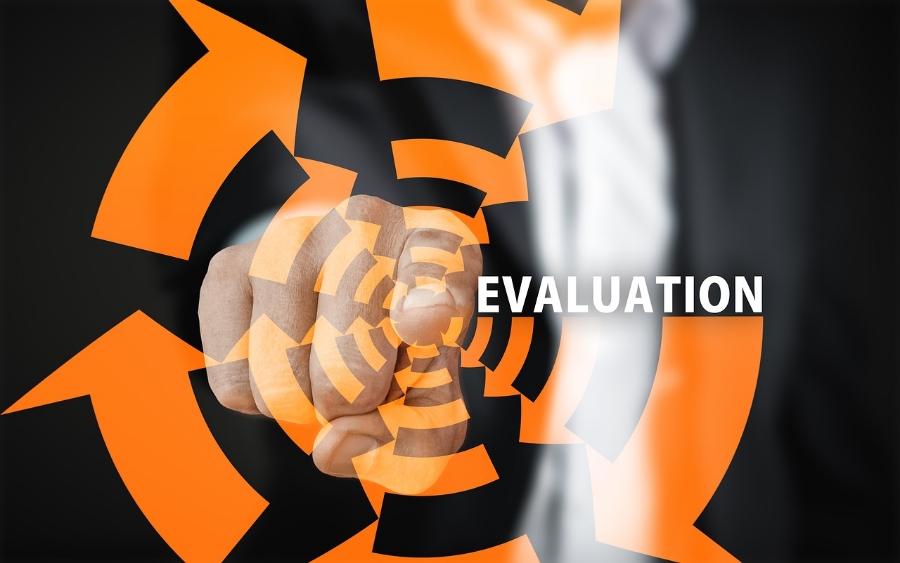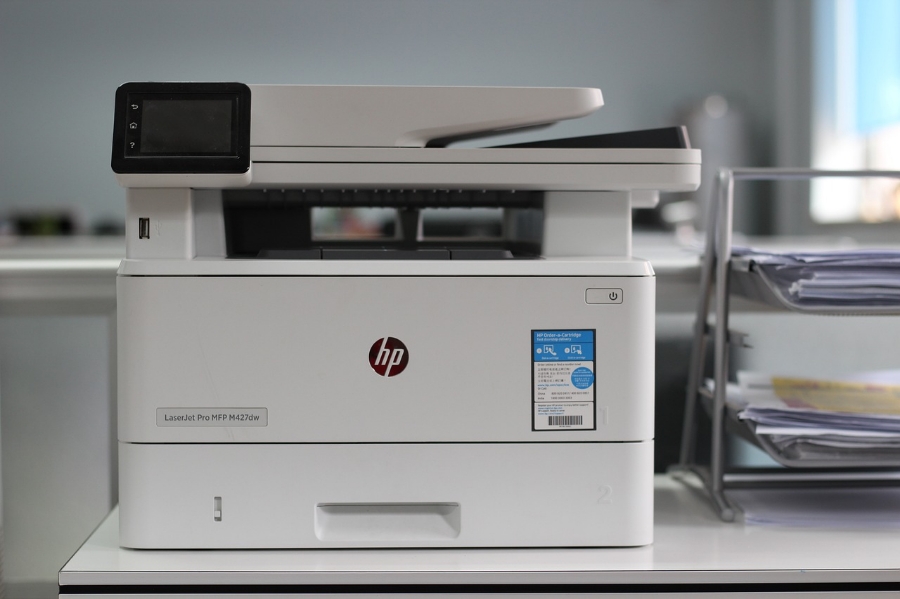In our last post we discussed the importance of a due diligence review when you're considering purchasing a business, and covered the questions that should be answered with respect to the business' financial and corporate history. This week we talk about legal and regulatory matters, customers, goodwill, market share and potential for growth.
Blog
Today we start a 3-article series on how to conduct a due diligence review when you are considering buying an existing business. Part I of the series covers the financial, corporate and historical data you should look at with your accountants and your lawyer. If you're thinking about purchasing a business, there are many issues you need to consider and many documents you need to review with your legal and financial advisers before you close the deal. It's not only important to know the current status of the business, but also its past history, its long-term viability, future market opportunities, and potential for growth.
Congratulations! You've finally found an ideal location for your business, and you can start negotiating the lease with the landlord.
But what should you be looking for in the commercial lease agreement? Before you sign anything, review the lease and make sure it answers each of the following questions:
- Will you be given a copy of the building inspection report? If not, can you arrange for your own inspection?
- Is a drawing of the leased premises attached with the demised area clearly marked?
- What is the date of possession? What are your remedies if the space is not available to you on the date of possession?
- Are you required to obtain any approvals or comply with any local regulations or ordinances before you can commence business in the leased premises?
- How long is the rent-free period? When do the lease payments begin?
- How will your security deposit be handled? How long will it take to receive a refund of the deposit at the end of the lease term?
- Are there restrictions on your use of the space? What are those restrictions?
- What are the provisions for rental increases? How much prior notice will be given?
- Are tenants required to pay a portion of the property taxes for the building?
- What types of insurance coverage, in what amounts, are you required to carry?
- Which utilities and services will you be responsible for paying?
- What other costs are associated with the space (advertising, merchant association dues, etc.)?
- How much will the landlord pay towards your leasehold improvements?
- Are there any restrictions on what kind of signage you can have? Do you need to get the landlord's prior approval before installing your signs?
- What are the landlord's obligations for repairs and maintenance on the building, the common areas and your premises?
- How much are your common area maintenance costs?
- What are the provisions for renewal of the lease at the end of the term?
- Do you have the right to assign the lease or sublease any of the space?
- What are your rights in the event of eminent domain, foreclosure, or partial or total destruction of the premises?
- What happens if you default in any of your obligations?
- What are your remedies if the landlord defaults?
- Are you required to return the premises to its original condition at the end of the lease period? Based on the original condition, what will the costs be to do this?
- Is there an obligation to pay legal fees and costs in the event of a dispute?
If you are satisfied with the answers you get to these questions, you should submit a Letter of Intent (LOI) or a Lease Proposal to the landlord which sets out all the negotiable elements of the lease.
The LOI or proposal should set out such details as square footage, initial term, renewals, base rent, rent-free period, allowance for leasehold improvements, etc., as well as the relevant tone of your negotiations to date. This will allow the parties to continue to negotiate the final terms of the lease. Keep every draft as a paper trail documenting the negotiations.
Finally, have your lawyer review the lease BEFORE you sign. And never sign anything that you don't fully agree with.
Image by H. Cuthill
When you're starting up a business, cost drives every decision you make. And when it comes to business equipment, you need to determine whether it is most cost-effective and advantageous to lease or purchase the equipment necessary to your business.
There are essentially three options available for acquiring the equipment you need: (1) a straight lease, (2) lease-to-own (also called a finance lease), or (3) outright purchase. The term "business equipment" can apply to anything you need for your operations, including computers, printers, and other electronics; office furniture; communications systems (smartphones, pagers, etc.); alarms and security systems; shelving and storage; specialized machinery; warehouse forklifts and loaders; and vehicles.
The Pros of Leasing
The upside of leasing is that it requires less of an initial outlay than purchasing, so you're not tying up so much money right off the bat. And for computer equipment, it can be the best option.
Your lease costs can be deducted as an operating expense, and they don't depreciate. Since the average equipment lease runs for 3 years, your lease will be expiring right about the same time that your computer equipment is obsolete, and you can upgrade to a new system under a new lease. (Review the lease terms to make sure they provide for maintenance, updates and support.)
The Cons of Leasing
Your overall costs are almost always higher because of interest and fees, you don't own the assets, and you build no equity in the equipment.
In addition, the lease agreement will contain restrictions on how you use the equipment: such as whether, and how much, you can customize the equipment for your business.
Comparison of Pros and Cons
LEASING | BUYING |
Lower upfront costs have less impact on cash flow | Higher initial investment required |
Higher total costs overall, interest rates much higher on lease than financed purchase | Lower total investment over the life of the equipment |
No ownership or equity until end of term | Ownership of and equity in assets upon purchase, with option for resale |
Easy upgrade options during and at end of term | Full control over use and customization of equipment |
Maintenance and insurance can be added as option to lease | Maintenance and insurance costs must be fully covered by owner |
Lease costs can be deducted as operating expenses | Equipment can be depreciated over a period of years which can be a tax benefit, but can mean loss of value |
Fixed monthly payments which can end up costing more than the value of the equipment over the term of the lease | Large upfront cost, but fewer ongoing expenses |
Penalties for early termination |
|
Should I Buy Instead?
When you buy it, you own it. And you can probably deduct a good portion of those asset purchases on your business income tax return. You also get the benefit of the depreciation deduction. If the equipment you need has a lifespan of more than 3-5 years and you've got the capital to do it, you probably should purchase instead of leasing it.
Office furniture is a good example of equipment with a long lifespan. While you may replace the chairs every few years, it's likely that the desks, shelving and filing cabinets will be around for a long time. These items are readily available from second-hand office suppliers, which can save you money. Buying second hand can be a great way to save money and still get what you need. Look for classified ads, listings on Craig's List and Kijiji, and shops that specialize in used office equipment and supplies.
Check out the local and online auctions as well. You have more recourse when buying from a dealer since you can usually take the item back, although there will probably be no warranty. The price might be higher than if you bought it from an individual, but the ability to return the item is worth paying more for. The risk you run when buying from an auction is that you can't actually test the equipment beforehand. Many auctions sell goods as seen, which means if the goods do not work, you have almost no chance of getting your money back, except for online auctions such as eBay. Find out what the restrictions are - and what your rights are - before bidding on any auction items.
Determining the Actual Costs
Many start-up companies will need to finance any equipment purchases. There are some questions that you will have to get answered in order to determine what the actual cost of leasing versus purchasing will be.
- What is the required down payment for the equipment?
- What is the term of the lease or loan?
- What are the monthly payments?
- What is the interest rate?
- Is there a final balloon payment at the end of the term? If so, what is the amount?
- What is the cost of an extended warranty (if applicable)?
- If lease-to-own, can you buy out early? At what cost?
- What is the total cost of the lease or loan (including maintenance and warranties) over its lifetime?
- If leasing to own, how much more are you paying to lease the equipment over and above its actual value?
- What are the tax deductions available if you purchase?
- What would the resale value of the purchased equipment be?
Can You Afford It?
Now that you know what the costs will be, ask yourself whether the business can afford it? Do you have sufficient cash flow at present to support your monthly lease or loan payments? If your business is seasonal, you'll need enough cash to support those payments during your off-season. And what about the maintenance costs? Are they included in your lease? Did you provide for them in the loan calculations? Do you know what they are? Then there's insurance. How much is the annual insurance cost to cover the equipment? Is it included in the lease?
If the answer to any of the above questions is "No", you should determine which equipment is absolutely essential for your business, and which items can wait until your cash flow improves. If you have to have it and the cash isn't there to buy it, then talk to several leasing companies and negotiate the best lease you can.
Image by xuefei wang from Pixabay
Have you ever thought about becoming a franchisee?
There are some great opportunities out there for enthusiastic and hard-working entrepreneurs, but first you need to do your homework. Here is some basic information that you need to know if you're considering buying a franchise.
What is a franchise?
Franchising is the practice of licensing others to use your successful business model. A franchise is basically a clone of that business model.
The franchisor (owner of the business model) replicates its method of doing business and licenses those "clones" to franchisees. Anyone interested in doing business using the franchisor's brand and system can apply to become a franchisee. If the applicant is successful, the franchisor and franchisee (and any guarantors) enter into a Franchise Agreement in which the relationship between the parties is described in detail.
What sort of laws govern franchises?
In the United States, China, some Canadian provinces, Australia, France (under the French Commercial Code) and Brazil, there are specific franchise laws that provide for full disclosure of all relevant facts and information to protect prospective franchisees. In most other jurisdictions, franchise is considered a distribution system, and the laws that cover other distribution networks apply (including trademark laws).
What are the pros to buying a franchise?
- The franchisor is selling a business that has already proven to be successful. A successful business has brand power, instant name recognition and offers a level of quality that is already known to customers.
- Most franchisors offer some degree of ongoing marketing and operational support to their franchisees.
- Franchisees can benefit from the franchisor's marketing campaigns.
- Franchisees may be able to keep inventory costs down by using the franchisor's suppliers.
What issues do I need to consider if I want to buy a franchise?
If you are considering buying a franchise, you need to thoroughly research all aspects of the franchisor-franchisee relationship, and the past record of the franchise you're considering. Some questions you need to answer before deciding to apply for a franchise:
- Does the franchise brand have long term value that is sustainable and/or that can be enhanced?
- What is the product / service being sold to the end user? How does the end user feel about the quality of the product / service?
- Why is the product / service better sold by a franchise rather than by a non-franchised business?
- Is the product / service unique in the marketplace? Is it protected by copyright or patent?
- Is the pricing competitive? Does the price reflect the value received?
- Is the product / service sold via the most effective locations or types of outlets (e.g. branded retail stores, online, through distributors, etc.)?
- Is the product / service promoted effectively? Do customers understand and respond to the promotional strategy?
What should I look for in a franchisor?
There is more to a franchisor than just a successful business method. Here are some questions you need to ask about the franchisor:
- What is the reputation of the franchisor? Is the franchisor perceived as being of good character and socially responsible? Are they a member in good standing of the relevant industry trade associations?
- Talk to some existing franchisees and see how their business is doing and how they feel about the franchise system. Is there anything they're unhappy with? Has anyone left the system?
- What is the franchisor's financial position? If you've submitted a franchisee application, the franchisor must provide you with full disclosure, including financial information. If you haven't submitted an application, you should try to obtain financial information from another source (if possible).
- What is the background of the management team? How much experience and expertise do they have? This information will also be included in the disclosure document.
What are the factors that make a successful franchise system?
Before you buy in, it's essential to determine whether the franchise system itself is successful. Key factors to examine are:
- How successful has the franchise system been to date? Are its franchisees doing well? How does the failure rate compare to other similar franchises and to non-franchised businesses?
- How does the franchise system pick its location sites? How successful have these sites been?
- How does the franchise system choose franchisees? What is the turnover rate? Have franchisees achieved acceptable ROI and are they happy with their investment?
- Does the franchise system have the necessary controls for early detection of problems in the overall business, as well as in the individual franchisee operations? Does it work effectively with its franchisees to resolve problems?
- Does the franchise system have a good relationship with its suppliers?
- Does the franchisor offer additional services to its franchisees to help them develop and succeed in their business?
How much will it cost me to invest in a franchise?
Don't sign up until you know exactly what the total cost of your investment will be (upfront costs and recurring fees), and how long it will be before you see a return. There are many things to consider:
- Upfront costs - Franchise fee, initial cash investment, operating licenses, inventory, equipment, staff training, outfitting the location, etc.
- Ongoing fees - Royalties, advertising fees, management fees, minimum purchase quotas, etc.
- Break-even point - How long will it take to reach break-even? What is the profitability potential?
- Projections - Are the franchisor's 5-year business plan projections attainable?
- Financial Services - Does the franchise system offer financial services to its franchisees through a major bank?
What should the Franchise Agreement contain?
Don't sign anything or pay any fees or deposits until you have reviewed the Franchise Agreement with a lawyer experienced in franchising. The Agreement should cover all of the following areas:
- Term - How long is the initial term? Do you have the option to renew it, and on what terms?
- Territory - What is the territory of your franchise? Do you have exclusive rights within that territory?
- Support - What type of support will the franchise system provide for start-up, training, and ongoing business assistance?
- Restrictions - What restrictions are there on the way you operate the business? Do you have to purchase supplies directly from the franchisor or its suppliers, or can you also purchase materials from third parties?
- Dispute resolution - Are there provisions for resolving disputes between the parties?
- Liabilities - Does the franchise you're buying have any outstanding liabilities? Who is responsible for clearing those?
- Termination - Do you have the right to terminate the Agreement, and on what grounds? What happens if you want to sell or assign the franchise?
If the answers you get to all of the foregoing questions are satisfactory, congratulations! You've taken the first step to becoming a franchisee.
Image by Gerd Altmann from Pixabay
Many web developers prefer to create their own Website Development Agreements for clients. Do you know if your agreement template addresses all of the key issues it should? This article provides a checklist of the provisions that you should be including in your standard form agreement.
At a bare minimum, you need to include clauses that cover:
- who owns the website and content after the work is completed,
- protection of intellectual property rights for any software or resources used in building the site,
- detailed description of the various development phases, and what constitutes completion of a phase,
- functionality testing procedures,
- resolution of problems that arise during the development process,
- covenants, warranties and undertakings given by each party,
- confidentiality (non-disclosure) provisions to protect the parties, and
- what types of ongoing support will be provided.
1. Clearly outline the project specifications and development phases.
Provide detailed specifications for the design of the website, which will then serve as criteria for final testing of the website to determine if the specifications have been met and if acceptance of the website is warranted. The specifications must be approved or modified by the client before work commences on the development of the site.
Clearly define the developer's performance obligations to avoid any ambiguity between the parties. Clarify how extra work will be approved and billed.
If the project warrants it, the Agreement should contemplate appointing a project manager to oversee and coordinate the development and to be the point of contact with the client.
Set out a timetable for development / performance milestones and for progress meetings at key points in the timetable, and include the payment schedule attached to those milestones and key points.
List all deliverables and resources required from the client and the times at which these are required. Include provisions which cover the implications if the client is late in delivering these items, i.e. how it will affect the timetable and completion date. Clarify what happens if a milestone is not met or the completion date is missed through no fault of the client.
Ensure that the Agreement allows you to subcontract any part of the development services if necessary.
The developer's performance obligations should include providing documentation and source code for all software used during the process.
- The Agreement must be flexible enough to allow for changes to the site specifications, and must also clarify how those changes will affect the timetable and development costs.
2. Make sure all parties agree on what is included in the contract price and how payments are to be made.
Include everything that is included in the price, such as software licensing fees and applicable taxes.
Payment should be tied to performance milestones. At least 1/3 of payment should be held back until the website has been thoroughly developed, delivered, tested and accepted by the client, and the website is ready to go live.
There should also be a further holdback (10%-15%) for a reasonable period following acceptance to ensure that all defects have been detected and fixed.
3. Specify who owns the website and the elements.
Unless otherwise agreed to with the client, the Agreement should expressly provide that the work done under the Agreement is a work-made-for-hire, and that all content, graphics, domain names, files and the look-and-feel of the site (together with all underlying code, software, digital programming) are the sole property of the client. A copyright notice should be displayed on the website.
For greater certainty, the developer should sign over all proprietary rights in the work to the client under an assignment provision. Unless the developer is an employee of the client, the developer must convey copyright ownership to the client in writing in order for the client to acquire all rights reserved to the author under the copyright laws.
Clarify whether the developer retains any rights to use any materials or software created during the development.
4. Cover all applicable hardware and software considerations.
If the developer is providing any of the hardware, are any manufacturer's warranties being provided?
If the developer is using any proprietary software in the development of the website, include provisions for the client to be able to license the software and access the source code in the event that the relationship between the parties is terminated or the developer goes out of business or becomes otherwise unavailable. The license granted to the client should be perpetual, royalty-free, irrevocable and worldwide, and should be transferable.
Is any third party software or material (such as graphics) being used in the development? Have the required licenses / consents been obtained? Who is responsible for, and who pays the costs for, obtaining them? And who is liable for the performance of that software?
5. Clarify how third party infringement claims will be dealt with.
Each of the parties should provide warranties that none of the material they provided infringes any intellectual property rights or other proprietary rights of any third party.
There should also be mutual indemnification by each party of the other party.
The developer should carry adequate liability insurance coverage to protect against third party claims.
6. Include confidentiality and non-solicitation provisions.
The Agreement should contain confidentiality clauses to protect each party's confidential information and proprietary data.
The Agreement should also contain a non-solicitation provision barring either party from soliciting the other's employees during and for a reasonable period of time following completion of the project.
If either party wishes to refer to the relationship in its marketing materials (including putting the developer's name and/or link on the website), this should be agreed to in the contract.
7. Ensure compliance with laws and regulations.
If the website collects any personal information from site visitors, all applicable local and international privacy and data security laws must be complied with.
If the website is an e-commerce site which will be processing payment transactions, PCI compliance must be included in the scope of services.
The website must contain all the required notices and disclosures for users (privacy, use of personal information, cookies, copyright, etc.)
8. Include liability provisions.
Each party should indemnify the other for any loss or damages arising as a result of such party's breach of its obligations. The liability should be limited to the total of the fees paid by the client under the Agreement.
Each party should indemnify the other against third party infringement claims with respect to content, material or resources supplied by that party.
9. Outline the specifics for website functionality.
The Development Agreement should clearly specify the anticipated functionality of the website, including page load times, connection speed, mobile friendliness, download speed, number of simultaneous connections and response times for user requests, compatibility with all Internet browsers, security protocols, checkout and payment systems.
The functionality provisions should also cover integration of the site with the client's existing data server structure.
The client must be able to make changes to the website without interfering with the site's operation or functionality.
Website functionality should also include the procedure for accessing, recording and compiling user data and analytics.
10. Include provisions governing installation and acceptance testing.
The developer is responsible for transferring and installing the site and all associated software and files on the client's web server.
The Agreement must address the following questions:
Who will take responsibility for acceptance testing?
Who will determine whether the testing has been successful?
Will acceptance testing occur in stages?
The client should have the right to reject the website if it fails to meet designated specifications and does not pass the acceptance tests.
11. Each party should provide specific warranties.
In addition to the developer's warranty that there are no infringing materials, the developer should also warrant that the website will be delivered free from all known viruses and material defects, and will conform to the specifications. There should be a reasonable period of time allotted to resolve any defects or shortcomings.
The client should provide a warranty that it is in full compliance with all applicable legal, financial and data protection matters.
Determine how long the developer's warranty should be in effect, and set out the start date and end date.
12. Specify the types of ongoing support that will be provided.
Determine whether the client will require training (e.g. html, CMS functionality, back-end administration, etc.) and if so, whether and for how long the developer will provide that training, and at what cost.
Will the developer be providing support and maintenance after completion? Is this tied to a warranty period? If not, then consider signing a separate support and maintenance agreement.
Determine the service level requirements, the costs to be billed to the customer, and billing and payment schedules.
Image courtesy of Pixabay.com
Careful preparation for meetings with the investment community seems as obvious as it is necessary. However, good intentions all too often get sidetracked and key preparations can easily be overlooked. The questions outlined below will serve as a checklist to make sure that every important item is addressed well in advance of your next investor session.
Are you a software developer?
More to the point, are you a software developer who wants to draft up a standard form of contract yourself, instead of having a lawyer do it? This checklist can help you cover the basics, but remember that it's always advisable to have a lawyer review your final form of agreement before anyone signs it, to make sure everyone's interests are addressed (it saves on litigation costs later).
Let's look at each of the sections that should be included in a standard-form Software Development Agreement, and the issues that should be addressed to protect your interests and those of your clients.
1. Parties to the Contract
Every legal contract should begin with the names, addresses and contact information of each of the parties. If any party is a corporate entity, the jurisdiction in which it was incorporated should be included as well.
2. Full Description of the Software and the Development Process
All of these items should be addressed. They can be briefly described in the main body of the Development Agreement, with the specific details attached as a schedule or appendix.
- Specifications of the software being developed.
- Definition of milestones, and criteria for the start and end of each phase of development.
- Timetable for deliverables.
- Progress reports, including:
- milestones achieved and completion of each phase,
- problems encountered,
- timetables for problem resolution,
- any changes to functionality.
- Testing specifications and criteria for passing each test.
- Standards and procedures to be applied.
- Customer's right to conduct quality audits and to review the developer's testing of the software.
- Installation, support and training that will be provided by the developer.
- Developer's obligation to deliver the software and documentation in accordance with the specifications.
- Customer's obligation to supply hardware, software, support, personnel.
- Provisions describing the process for customer's acceptance of the software and documentation.
3. Background Technology
Any background technology (such as existing code and applications that will be utilized in the development of the new software product) must be described in sufficient detail, and the ownership of that background technology established - whether it is owned by the customer or the developer.
4. Definition of "Proprietary Information"
Each party will be providing such things as business data, source code, and other types of confidential or proprietary information. The term should be well-defined, as it applies to each of the parties.
5. Ownership of Software and Documentation
- Who owns the software and documentation (taking into consideration ownership of the background technology)?
- What are the rights of each party are with respect to licensing and sublicensing the software?
- The developer should assign its intellectual property rights in the software to the customer.
- It is also important to set out any restrictions on the use of the software (if applicable).
6. Payments
The section of the Agreement that deals with payment of the development fee should deal with more than just how much and when payments are to be made. All of the following should be addressed:
- The payment schedule should be based on accomplishment of development milestones.
- Amount of development fees and allowable expenses, including any maximum amount.
- Do expenses over a certain amount require customer's prior written approval?
- Do the development fees include applicable taxes?
- Developer's invoicing schedule and due dates for payment of invoices.
- Process for customer's acceptance of development milestones.
- Customer's right to buy out of the contract in the event of early termination.
7. Termination
- Provisions for termination by either party, and for what reasons.
- Notice period and form of notice, which should include the reasons for termination and the effective date of termination.
- Survival of terms (such as confidentiality), licenses, and sub-licenses after termination. Which provisions will survive (continue to be binding after termination), and for how long?
8. Training
- What types of training services will be provided by developer?
- Where will the training take place?
- How long will training sessions take place, and how many participants will be accommodated?
- What sort of training materials will be provided? Who provides them?
- Is there a separate fee for training, or is it included in the development fees?
9. Modifications to Software
- Spell out the customer's rights to modify the software, and to acquire any modifications by the developer.
- Who owns the modifications?
- Are there additional fees?
10. Errors and Defects
- The customer should have sufficient time to use the software to detect any errors or defects in the software. This section should set a reasonable notice period, such as 90 days, during which the customer should notify the developer in writing of any errors or defects.
- The developer has an obligation to correct the problems, provided that the errors or defects did not come about by misuse on the part of the user.
- The parties must also agree on a fair and reasonable arrangement as to any additional fees for work required to fix errors and defects.
11. Warranties
The developer's warranties to the customer should include:
- Performance of the software.
- Customer's right to use software and documentation.
- Ownership of the software, and developer's ownership of any background technology used in the development.
- Indemnification of the customer against third party infringement claims and damages.
- Survival of warranties after termination or expiration of the contract.
The customer should also provide a warranty of ownership if any of the customer's background technology was used in the development, and should indemnify the developer against claims and damages in that regard.
12. Standard Clauses
There are certain boilerplate clauses that are included (in whole or in part) in all legal agreements:
- Procedure for giving notice by one party to the other party. It should always be in writing, and can be delivered personally, by mail (whether regular or registered/certified), by fax, or any of these.
- Governing law clause.
- Headings not to be construed as part of the agreement.
- Force majeure provisions.
- Severability of clauses, in the event that certain provisions are deemed invalid.
- No amendments unless agreed to by all parties.
- Schedules and attachments to form part of the agreement.
- Entire agreement, i.e. no other agreement exists between the parties with respect to the software development.
- Non-merger (survival) clause setting out which provisions will survive termination.
To get you started, you can find template software licensing and development contracts at MegaDox.com. These are fully editable templates which are easily customized to include all the details of your client transactions.
- 2025
- 2024
- 2023
- 2021
- 2020
- 2019
- 2018
- 2017
- 2016
- 2014
- 2013
- 2012
- 2011











